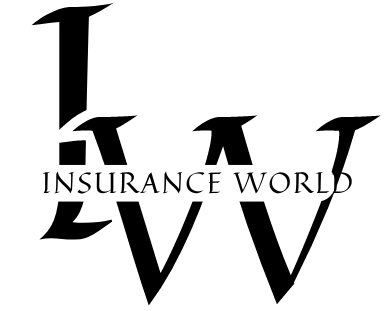Introduction:
Liability insurance serves as a critical safeguard for businesses, providing financial protection against claims and lawsuits arising from third-party injuries, property damage, or other liabilities. Whether you’re a small business owner or a large corporation, liability insurance is essential for mitigating risks and protecting your assets. In this comprehensive guide, we’ll explore everything you need to know about liability insurance, from understanding the basics to selecting the right coverage to suit your business needs.
- Understanding Liability Insurance:
- Liability insurance, also known as third-party insurance, is a type of insurance coverage designed to protect businesses against legal liabilities resulting from negligence, errors, omissions, or accidents that cause harm to third parties.
- It provides financial protection for legal defense costs, settlements, judgments, and damages awarded in lawsuits or claims filed by third parties, including customers, clients, vendors, or members of the public.
- Liability insurance policies can cover a wide range of liabilities, including general liability, professional liability, product liability, and specialized coverages tailored to specific industries or risks.
- Types of Liability Insurance Coverage: a. General Liability Insurance:
- General liability insurance provides coverage for third-party bodily injury, property damage, and advertising injury claims arising from business operations, premises, products, or services.It protects businesses against lawsuits alleging negligence, slip-and-fall accidents, property damage caused by products or operations, and defamation or copyright infringement in advertising.
- Professional liability insurance, also known as errors and omissions (E&O) insurance, provides coverage for claims arising from professional services or advice provided by businesses or individuals.It protects professionals such as doctors, lawyers, consultants, and architects against allegations of negligence, errors, omissions, or failure to meet professional standards of care.
- Product liability insurance provides coverage for claims arising from injuries or property damage caused by defective products manufactured, sold, or distributed by a business.It protects businesses against lawsuits alleging design defects, manufacturing defects, inadequate warnings or instructions, or failure to meet product safety standards.
- Cyber liability insurance provides coverage for losses and liabilities resulting from data breaches, cyber attacks, privacy violations, or other cyber incidents.
- It protects businesses against costs associated with data breach response, forensic investigations, regulatory fines, legal defense, and notification of affected individuals.
- Benefits of Liability Insurance:
- Financial Protection: Liability insurance provides financial protection for businesses facing costly legal liabilities, lawsuits, or claims arising from third-party injuries, property damage, or other liabilities.
- Legal Defense: Liability insurance covers the costs of legal defense, including attorney fees, court costs, settlements, or judgments, allowing businesses to defend themselves against lawsuits without incurring significant financial burdens.
- Reputation Management: Liability insurance helps businesses manage their reputation and credibility by responding effectively to claims, disputes, or incidents involving third parties, maintaining trust and confidence among customers, clients, and stakeholders.
- Factors Affecting Liability Insurance Premiums:
- Business Type and Industry: The type of business and industry-specific risks can influence liability insurance premiums, with higher rates for industries with greater exposure to liability claims or higher risk profiles.
- Coverage Limits and Deductibles: The level of coverage selected, including coverage limits, deductibles, and policy terms, can impact liability insurance premiums, with higher limits and lower deductibles resulting in higher premiums.
- Claims History: A business’s claims history, including past lawsuits, claims, or losses, can affect liability insurance premiums, with higher rates for businesses with a history of frequent or severe claims.
- Risk Management Practices: The effectiveness of a business’s risk management practices, such as safety protocols, quality control measures, and employee training programs, may impact liability insurance premiums and eligibility for coverage.
- Selecting the Right Liability Insurance Coverage:
- Assess Liability Risks: Evaluate the potential liability risks and exposures faced by your business, including risks related to operations, products, services, and interactions with third parties.
- Identify Coverage Needs: Determine the types of liability insurance coverage needed to address your business’s specific risks and liabilities, considering factors such as industry regulations, contractual requirements, and business activities.
- Compare Policy Options: Research and compare liability insurance policies from multiple insurers, reviewing coverage options, premiums, deductibles, and policy terms to find the best fit for your business.
- Customize Coverage: Tailor your liability insurance coverage to meet your business’s unique needs and risk tolerance, considering optional endorsements, coverage extensions, and risk management services offered by insurers.
- Seek Professional Advice: Consult with insurance brokers, risk management professionals, or legal advisors for guidance on selecting the right liability insurance coverage and minimizing your business’s exposure to liabilities.
Conclusion:
Liability insurance is a fundamental component of risk management for businesses, providing essential financial protection against legal liabilities, lawsuits, and claims arising from third-party injuries, property damage, or other liabilities. By understanding the basics of liability insurance, assessing your business’s liability risks, and selecting the right coverage to suit your needs, you can safeguard your business’s financial stability and reputation. Take the time to evaluate your liability insurance options, customize your coverage, and implement effective risk management practices to protect your business from potential liabilities and ensure long-term success. With the right liability insurance coverage in place, you can focus on growing your business with confidence and peace of mind.

